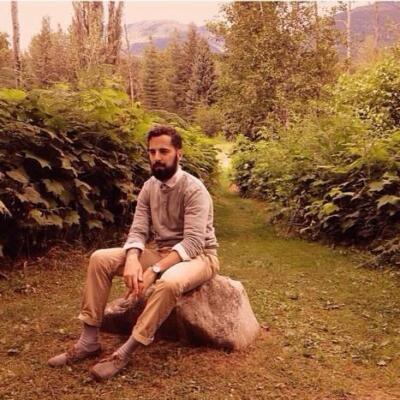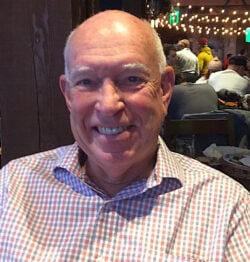1277 Pre-traumatic stress syndrome
Last Tide
by Andy Zuliani
Edmonton: NeWest Press, 2021
$21.95 / 97817744390344
Reviewed by Laurie Ricou
*
 In July 2015, the New Yorker published a lengthy documentary piece, meticulously envisioning “The Really Big One,” describing the certain obliteration of the Northwest Coast by an enormous earthquake, and the resulting tsunami. Soon after, Johanna Wagstaffe’s podcast for CBC Radio, “Fault Lines,” accumulated similar ominous details predicting massive physical destruction such as the earth has not seen for millennia. Although Andy Zuliani’s novel does not refer directly to these prominent warnings, they come to mind here because Last Tide might be said to vibrate in some zone before the Big One, which is to say in that curious absence where we have scads of convincing evidence of inevitable obliteration — it might happen while you are reading this number of The Ormsby Review — but you cannot and will not think about it. Or not for long. A passage from Howard Nemerov’s “How Everything Happens” would serve as a fitting epigraph for the novel: “When nothing is happening/ When it happens/ something / pulls/ back/ not/ to/ happen.”
In July 2015, the New Yorker published a lengthy documentary piece, meticulously envisioning “The Really Big One,” describing the certain obliteration of the Northwest Coast by an enormous earthquake, and the resulting tsunami. Soon after, Johanna Wagstaffe’s podcast for CBC Radio, “Fault Lines,” accumulated similar ominous details predicting massive physical destruction such as the earth has not seen for millennia. Although Andy Zuliani’s novel does not refer directly to these prominent warnings, they come to mind here because Last Tide might be said to vibrate in some zone before the Big One, which is to say in that curious absence where we have scads of convincing evidence of inevitable obliteration — it might happen while you are reading this number of The Ormsby Review — but you cannot and will not think about it. Or not for long. A passage from Howard Nemerov’s “How Everything Happens” would serve as a fitting epigraph for the novel: “When nothing is happening/ When it happens/ something / pulls/ back/ not/ to/ happen.”
Something is happening on Peliatos Island somewhere at the distant edge of the Pacific Northwest. To the island (“the rough and romantic end of the earth”) come Ana and Win, photo-surveying in a van whose high-tech equipment reminds of the processes of Google Street View. Kitt, the other recent arrival, is a very wealthy leisurewear genius who is building a grand home at tide’s edge. “They’re the vanguard of change,” as Win defines their impact, “and it’s a deeply unwanted change.” Resident on the island is Marcus, hippy and influential leader of anti-development fights on the island. His sister Stephanie, another activist opposing the construction of Kitt’s mansion, is bizarrely buried alive in concrete, the most pronounced allegory in the novel.

Soon after their arrival on the island, Ana and Win’s vehicle crashes in some ritual way, almost as if the forest is their dark unformed opponent. They are rescued and nursed by Lena, the key reconciling presence among the conflicting forces shaping the story. As a student of marine geography Lena monitors wave movements, plate tectonics, and seeks “to track … micro-events that would lead up to” ‘The Big One.’ Hence, she is positioned to warn the island’s inhabitants of imminent danger.
We know the novel’s characters as ideas, types, rather than personalities, usually by first names only. Motifs of dream, speculation, darkness, and the occult and mystical circulate in almost fabular form. Something pulls back not to happen. The prominence of the photograph (untactile, remote, static, blurred) reinforces the presence of absence. (Win’s job is described as “erasing faces.”) Something imponderable is in the offing. We know it but don’t want to know it.
Such hesitancy is reflected in a segmented form: three Parts, each divided into numbered chapters. In turn the chapters are composed of shorter “takes,” most of which feel suspended, incomplete. The effect is a series of sketches of the post-digital culture. What happens? To whom? How? We read with a limited sense of interaction between scenes or among characters, but touched by many moments of apprehended trauma, some remembered, some imagined, some belonging to what we might call pre-traumatic stress syndrome.

Within its intervals of incompleteness, the novel pauses occasionally for compact studies of customs and behaviour. A brisk history of the (mythical) island traces its development from Indigenous consciousness to “improvised commune” to “sought after vacation spot.” Lena’s dream of the meticulous mechanics of surfing seeks to explain her partner’s disappearance. Glimpses of Win’s past travels in Thailand introduce the spicy cuisine she learns to tolerate. Kitt ponders the influence of Soviet clothing on catwalk fashion. An affectionate catalogue illuminates the complicated composition of a shell beach.
Zulani contemplates the ethics of choice on an abstract island. Given that the island is home to a community of surfers, the big wave is both an anticipated thrill and, as a giant tsunami, ignored. What to do while balancing, he asks — while waiting and not-waiting. What response should a society choose? In the prequel to the Big One, “sometimes it seems like the island wants us off of it.”
*

Laurie Ricou is Professor Emeritus of English, UBC. His books include The Arbutus/Madrone Files: Reading the Pacific Northwest (NeWest Press and Oregon State University Press, 2002) and Salal: Listening for the Northwest Understory (NeWest Press, 2007). Editor’s note: Laurie Ricou has also reviewed a book by Grant Buday for The Ormsby Review.
*
The Ormsby Review. More Books. More Reviews. More Often.
Publisher and Editor: Richard Mackie
The Ormsby Review is a journal service for in-depth coverage of BC books and authors. The Advisory Board consists of Jean Barman, Wade Davis, Robin Fisher, Cole Harris, Hugh Johnston, Kathy Mezei, Patricia Roy, Maria Tippett, and Graeme Wynn. Scholarly Patron: SFU Graduate Liberal Studies. Honorary Patron: Yosef Wosk. Provincial Government Patron since September 2018: Creative BC
“Only connect.” – E.M. Forster
One comment on “1277 Pre-traumatic stress syndrome”